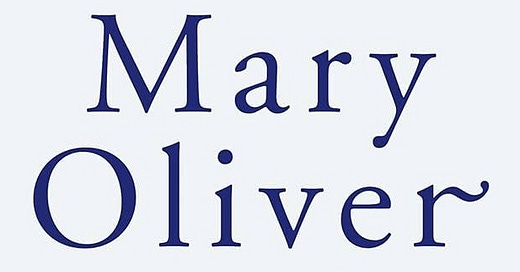When I walked into my local bookstore and stumbled across this thin, tangerine, and cream-colored guide, I was immediately compelled to buy it. I didn’t bother flipping through the pages. I knew Oliver’s name from her poetry collections Upstream and Dream Work. Her poems are sharp and read like illustrations, and I thought back on how her poems made me feel as if I were devouring each word and savoring their cadence. I wanted to learn how to better harness my words to paint vivid pictures in my readers’ heads the way she’s done for me. I knew Mary Oliver would be a fine teacher.
I knew this handbook would be a great source of knowledge on meter, classical forms, diction, etc. But this book offered so much more than assistance in form. It was a rich meditation on how poetry shapes the mind and vice versa.
Here are a few of the lessons I learned from her Handbook:
1. The form may change, but the need for poetry does not.
“None is timeless: each arrives in a historical context; almost everything, in the world, passes. But the desire to make a poem, and the world’s willingness to receive it-indeed the world’s need of it-these never pass.” (Oliver 9)
Poetry comes in all shapes and sizes. Whether it’s Syllabic Verse, Free Verse, or Lyric, there’s something for everyone. What remains the same for all forms of poetry is that it may contain the power to touch something within a reader.
Particular forms and their popularity have shifted throughout history. In modern times, free verse tends to be the most popular type of poem. This is the style that I write in most often. From John Milton’s 1667's Paradise Lost to Mary Oliver’s 2020’s work, free verse or blank verse, has created an interesting opportunity for expression without the restraints of rhyme.
2. A poem’s construction must be reliable, a Poet is a tour guide.
“A meaningful rhythm will invite. A meaningless rhythm will dissuade.” (57)
This goes hand and hand with tip 3. Despite the genre of poetry used, the author must understand not only the basics of construction but the purpose of each form, as well. Understanding Rhyme and syllabic meter can help novice poets better format their work into a well-constructed piece. On the other hand, Oliver warms that forcing a rhyme or relying too heavily on it, may lead readers to become wary of your work. Form should not precede content.
3. Free Verse is not actually ‘free.’
“Free verse is not, of course, free. It is free from formal metrical design, but it certainly isn’t free from some kind of design.” (67)
Free verse has its own set of rules and if an author can use the lack of rhyme constraints to their advantage, the poet can unlock unlimited potential of self-expression. A different set of tools can be utilized in free verse to ensure your poem follows a theme. Repetition of lines and syntax can keep your free verse from wandering too freely.
4. Observation and communication are the key roles of a modern poet.
“The poem is not a discussion, not a lecture, but an instance- an instance of attention, of noticing something in the world.” (74)
The role of a poet has shifted throughout history. Poets were at one point looked to for information on how to process political and ethical questions. Poets in the modern day are viewed mostly as expressive artists. This is not a bad thing in my opinion. An artist is able to express difficult topics with both beauty and passion that can inspire movement, revelation, and even revolution. Ultimately, it is up the the reader, the observer to impose their own meaning onto a piece of art.
5. Step back and reflect.
“One of the difficult tasks of rewriting is to separate yourself sufficiently from the origins of your poem- your own personal connections to it.” (109)
Editing is the hardest part of writing a poem. If you want your writing to inspire and reach others, it has to be readable and understandable. ‘Kill Your Darlings’ is a well-known editing technique for writing fiction, but it applies to poetry, as well. Sometimes we are too close, too connected to work to fully comprehend how to make it beyond ourselves. Oliver recommends the poet to consider their imagery carefully, for the images are what readers will take in first.




